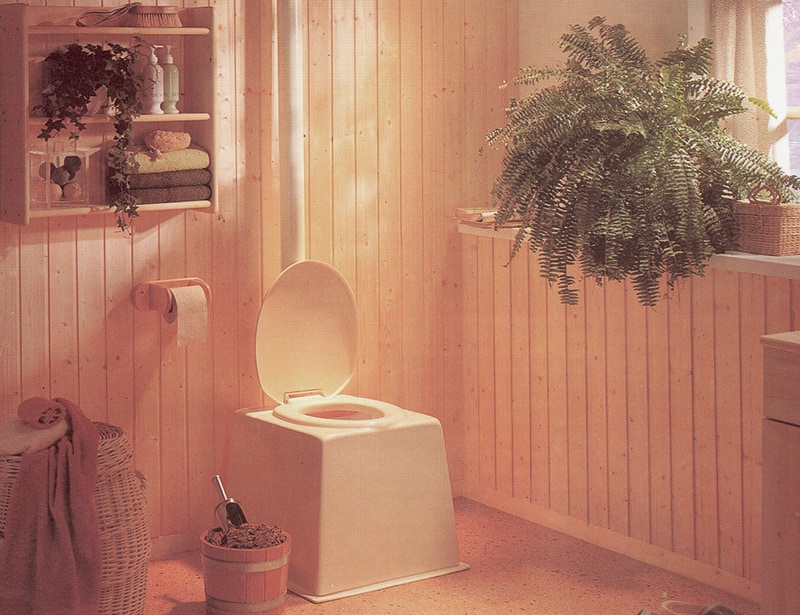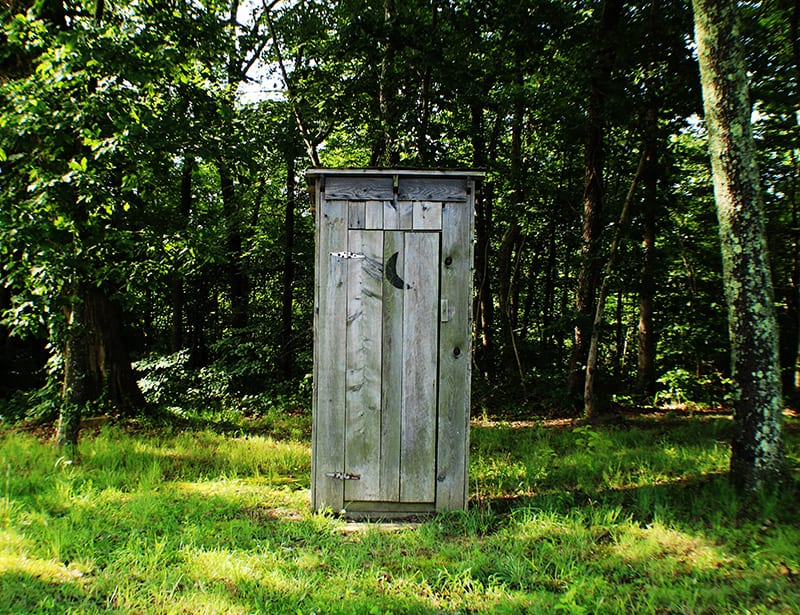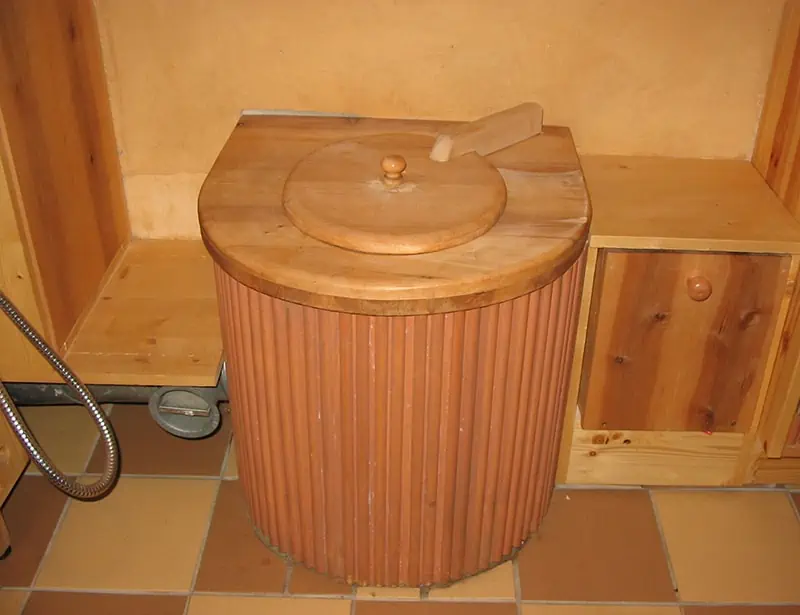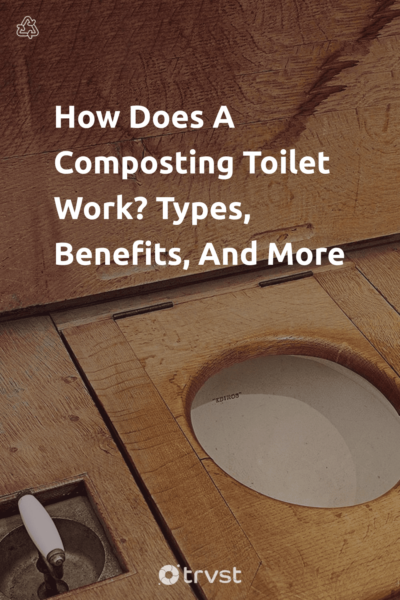How Does A Composting Toilet Work? Types, Benefits, And More
Have you ever thought about how a composting toilet works? Essentially, composting toilets break down human waste like a compost pile. It uses aerobic decomposition to break down the waste instead of flushing it away like traditional toilets.
These types of toilets are ideal for travelers who move around a lot. You can also set them up as a traditional water closet system in your home. In this article, we will look at what a composting toilet is and how composting toilets work. We’ll also touch on the benefits, costs, and more.
What is a composting toilet?

A composting toilet gathers human waste and converts it to compost or organic matter you can use in your garden. They function with batteries or electricity, using little to no water consumption. The compost toilet combines materials like leaves and sawdust for its composting process.
These water closets compost human waste and compost toilet paper free of odor. To break down solid waste, they create an oxygen-rich environment that allows aerobic bacteria to decompose solid waste.
These composting toilets are in various designs, power sources, and tank capacities. Furthermore, they are great for off-grid living and people living in tiny houses or cabins. Many people also use compost toilets in RVs.
Types of composting toilet systems
You can find different composting toilet systems from other manufacturers. Here are some composting toilet types:
Self-contained composting toilet systems
The self-contained toilet systems have various compartments in a single unit. In other words, the composting toilet and the compost tank are all in one. They have a drain for removing liquid waste and a composting chamber that you can empty from beneath the water closet.
Since it is portable, the self-contained models are an excellent choice for boat rides or camping trips.
Central compost toilet system
The central composting system or split composting toilet system comes with two distinct parts - the composting toilet and the composting chamber, which you can find in the basement where the solid waste and liquid waste are emptied.
The central systems look more appealing and more like the traditional septic tank. They also have large composting capacities and work great for permanent off-grid living.
Single and multi-chamber toilets
The two types of composting systems listed above can be divided into single-chamber toilets and multi-chamber toilets.
The single-chamber toilets make use of a ventilation system that evaporates the liquid waste. In contrast, the multi-chamber composting system separates both the liquid and solid waste. It channels the excess moisture from the composting chamber into the evaporation chamber through a screen.
How does a composting toilet system work?

So, how does a compost toilet work? Well, most composting toilets work similarly to your standard toilet. There is a toilet seat on the compost toilet where you can urinate or defecate. The toilet then separates the urine from the solid human waste without the need to flush.
These two types of waste move to two separate chambers. The liquid or urine moves to the evaporating chamber, where aerobic organisms like compost worms, tiny insects, and fungi enrich the urine with nitrogen, causing it to evaporate faster.
The solid waste goes to a separate chamber where aerobic organisms similar to that of the liquid also help break down the waste. However, you will need to add some carbon material to help the waste break down more quickly. Such carbon material includes sawdust, peat mix, straws, and so on.
You can use the waste as garden compost material once the waste breaks down. Composting tools may vary depending on factors like storage capacity, the quantity of waste materials, water closet design, and size.
Benefits of using composting toilets

This system may not seem very appealing if you’re used to regular toilets. However, composting toilets comes with many benefits:
Conserves water
One big advantage of using a compostable toilet is that you can save lots of water. Unlike the flush toilet, the compost toilet is a dry toilet, which means that it doesn’t require running water for toilet flushing. So, with a composting toilet, you can reduce water and energy usage and save lots of money.
Related Read: Why Is Water Conservation Important?
Produces fewer odors
Interestingly, while composting toilets may appear otherwise, they smell less than the regular flush system in your bathroom. It’s because they have separate units for liquids and solids.
You must add sawdust and dirt to the solids to break them down quickly and prevent potential health risks. As a result, you won’t potentially experience the smell that comes from a septic system. So, instead of that sewage odor you find in regular water closets, you may smell fresh dirt or even nothing at all.
Saves construction and maintenance costs
Our traditional regular flush toilet requires a connection to septic tanks and a sewage system within your locality. This incurs more maintenance costs and may contribute to greywater pollution, which has a significant environmental impact. As such, you can save money you would otherwise use for maintenance.
Requires no black tank
If you’re moving around in an RV or tiny house, you will typically need black tanks to take out wastewater. The process can be quite unpleasant, as you will also need to find a dumping station. On the other hand, composting toilets won’t require a black tank. You will only be working with a bucket of composted dirt, which you can take out more comfortably.
More eco-friendly
Handling human waste is not something we all look forward to. However, if your compost toilets are working properly, they leave you with nutrient-rich compost that you can add to your garden or compost heap.
If you’re a gardener, you know that this can save you lots of money you would otherwise use for fertilizers. On the other hand, the regular toilet could potentially contribute to greywater pollution.
Related Read: Urban Composting, What Not To Compost, And What You Can.
What are the downsides of using composting toilets?
The major downside of using a self-contained compost toilet is that it will require more maintenance. You will need to remove the waste manually and properly to avoid odors or potential health risks.
If your compost toilet is for family use, it may be challenging to operate as it will require a more extensive system.
Some types require electricity and other power sources. You may also need to keep an eye on moisture and air.
Should you use composting toilets for tiny houses?
Composting toilets are a great pick for tiny houses. They take up less space than conventional toilets and come in various designs, depending on your preference. They don’t require septic tanks, so you can decide to live in areas with no sewer system.
Will composting toilets smell in tiny houses? If well-maintained, you'll find a composting toilet won’t produce any unpleasant odors. To keep your composting toilet smelling fresh, you want to regularly empty the urine and solid chamber, clean the ventilation system, and regularly deep clean your water closet.
You also want to conduct regular inspections to identify any holes or cracks that could cause odors.
Can you toss toilet paper into your composting toilet?

Similar to your regular flush toilets, you can easily toss toilet paper in your compost toilets. Since it is a paper product, it will break down with the solids. However, this may happen at a much slower rate. You want to avoid throwing items like pads, diapers, and wipes.
Related Read: Toilet Paper Alternatives, Eco-Friendly Toilet Paper.
How do you get rid of waste from a composting toilet?
Disposing of waste from your composting toilet is rather simple. Both solids and liquids go to separate chambers, so you can easily get them emptied separately. You can dispose of your solids (already turned compost) in your garden or compost pile and also add your urine as a fertilizer or alternatively pour it into a sewage system.
How much does a composting toilet cost?
The cost of composting toilets may vary depending on the type of toilet and installation costs. So, you can find options that may go for as little as $50 for the do-it-yourself versions. And it can also go as high as thousands of dollars for more sophisticated versions. However, those with additional features like heating and electric elements may come at a higher cost.
Wrapping up
Compostable toilets come with tons of benefits. If you enjoy traveling and living off the grid, composting toilets will make a great option for your RV or van, where a traditional toilet won't suit. Composting toilets are more eco-friendly and can help you save resources.
Jen’s a passionate environmentalist and sustainability expert. With a science degree from Babcock University Jen loves applying her research skills to craft editorial that connects with our global changemaker and readership audiences centered around topics including zero waste, sustainability, climate change, and biodiversity.
Elsewhere Jen’s interests include the role that future technology and data have in helping us solve some of the planet’s biggest challenges.

